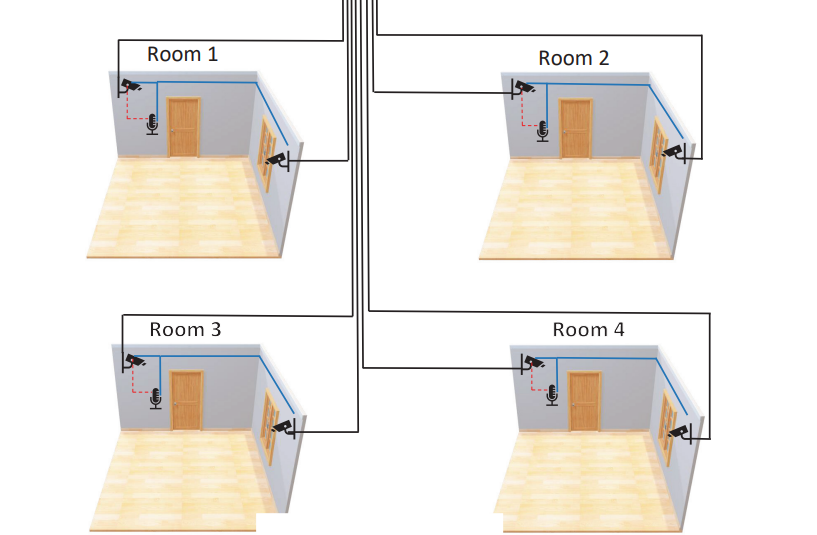
Designing an Interview Room
1) Facility Options – New Build or Renovation? :
A detailed space needs analysis will take a creative look at your facility’s existing layout, as well as its potential for a remodel. Your interview room should comfortably accommodate three individuals. Working with a dimension of 8’ x 10’ often makes the most sense. Conducting interviews in a room without any exterior windows is also ideal, because even with drapes or blinds, the subject may sense a lack of privacy during the conversation.
It should quickly become clear whether you have an optimal place within your facility for the updated interview room. A consultant or architect who is familiar with law enforcement protocols and LE-specific design layouts can help conduct this analysis. Otherwise, be sure to keep the following considerations in mind:
• Structural Systems (e.g., HVAC, plumbing, fire protection)
• Electrical & Telecommunications Systems
• Access Floors & Ceiling Heights
• Private Space with No Windows
• Building Layout (i.e., located away from holding cells)
Agencies must also anticipate future legal mandates and changes for their facility’s adult and juvenile inmate space needs. Planned department growth and agency needs may impact your decision too.
Ideally the space will be located in a neutral part of the building, away from any reminders of what the next steps might be for suspects who decide to tell the truth. Of course, some agencies will have the option to acquire and adapt another existing facility in the area. Moving to a new address can be a strategic solution for agencies that are already outgrowing their current space.
2) Room Design and Furniture:
Having the proper layout for your interview room works to uphold your agency’s integrity and protect every detail for court-admissible evidence. Installing microphones and cameras at the best possible angles will help produce a high-quality recording every time. Even the seemingly “mundane” aspects of your interview room are critically important.
THE DOOR: The standard recommendation is for the door to not have a lock. It also shouldn’t resemble a “cell door.” A solid door without any windows is best because it allows for privacy while simultaneously providing acoustic control. Reviewing the door’s Sound Transmission Class (STC) rating is always important for your soundproofing efforts. The higher the STC rating, the better the noise reduction. You should ideally be using a door with a rating between 50 and 60, or even greater.
FLOORING: Short-fiber carpeting tends to work well because it helps absorb sound. This also makes it easier to clean the room.
WALLS: To eliminate distractions and foster a sense of privacy, the room should not have any windows. As with the floors, the walls should be as well-insulated as possible for echo elimination within the room and noise reduction from outside. A light pastel paint color is also ideal.
ARTWORK: Agencies should also be aware of how their interview room will be perceived by a jury viewing the interrogation’s audio video recording. Sometimes a piece of artwork can help emulate an office setting. It’s best for this to be on the wall behind the interview subject, which will subsequently put the artwork in view of the jurors. The same is true for clocks—these should only ever be placed on the back wall. And under no circumstance should the interview room have any reminders of police work on display (e.g., framed certificates, department patches).
WRITING SURFACE: The traditional setup of having a desk or table set between the interview subject and the interviewer is outdated. This can end up acting as a sort of “barrier” or “shield” to make a suspect more inclined to withhold the truth. Additionally, you don’t want the writing surface to conceal the interview subject’s lower body movements. All aspects of their nonverbal behavior need to be analyzed. Positioning the table against a wall helps eliminate these problems. The detective or investigator can then sit off to the side, which gives the cameras a better angle of the interview subject for the recording.
CHAIRS: You will likely place three chairs in the room: one for the interview subject, one for the investigator, and another for an observer. Go with solid chairs that don’t swivel, and be sure to keep the chairs’ styles consistent. None should look more comfortable than the others.